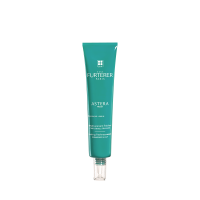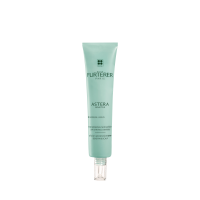Asteraceae, the Native American daisy that soothes irritation
It has been coloring the plains of the American Midwest with its purple hues for centuries, but Pierre Fabre's botanists only have eyes for its roots. Asteraceae is one of those plant families with countless virtues that are abundantly found in Western pharmacopoeia. But what do we really know about it? What mysterious power does it hold to treat our irritation and itchiness so well?
Flower power
Native to North America, the narrow-leaved purple coneflower (Echinacea angustifolia) is a plant of the Asteraceae family. It is one of the rare medicinal plants from this part of the world to have crossed the oceans to offer us its benefits. Well known to the Native American tribes of the central part of the continent, Echinacea angustifolia was included by the Comanche, Sioux and Cheyenne peoples in first aid kits well before the arrival of European settlers. Behind its badminton shuttlecock-like appearance are hidden soothing and healing properties, which have been used for centuries to treat snake bites, respiratory ailments, toothaches, ulcers and certain viral diseases.
Introduced to Europe after the first explorations, this perennial plant is still a benchmark in European pharmacopoeia, as it is found in over 300 pharmaceutical products.
Gentle yet strong at the same time
Although Echinacea angustifolia is not lacking in therapeutic properties, it is mainly for its anti-inflammatory and immunostimulant virtues that its cultivation has been developed in Europe. For topical use, the extract from its root is particularly of interest for reactive skin conditions, and in particular the scalp, an area that is excessively sensitive to all types of exogenous stress (UV rays, free radicals, oxidation; physical, mechanical, chemical stress, etc.). Asteraceae extract will gently bring the irritated scalp back to a normal state by fighting irritation and soothing inflammation.
Its action mechanisms have been the subject of numerous research studies to prove its effectiveness and safety. Two classes of molecules are at work in Asteraceae’s actions against irritation: phenolic compounds and polysaccharides.
The former are represented by echinacoside, a caffeic acid derivative with anti-inflammatory and antioxidant properties, which is abundant in Echinacea angustifolia. The latter work soothing wonders and are found in several plants associated with this type of action, such as Aloe vera.
The soothing action of Echinacea is the result of the synergy of its components over several pharmacological targets involved in the mechanisms of inflammation. In short, they form a combination of active ingredients that are both inflammation fighters and security guards for our body wherever irritation occurs.
The root of the matter
The benefits of Echinacea angustifolia are found in its roots. For René Furterer, the plant is grown in Germany and then extracted using a 100% natural process involving water and plant-based glycerin. This so-called hydro-glycerin extraction is performed cold with alternating maceration and percolation (a steam-based method) for 24 to 48 hours. After filtration, the extract obtained is incorporated into the formulations of the soothing care products and shampoos in the Astera range, where its combination with cold essential oils of Mint and Eucalyptus will calm the irritation of scalps in need of balance and protect the most sensitive from the aggressions of daily life.
OUR PRODUCTS DESIGNED FOR YOU






